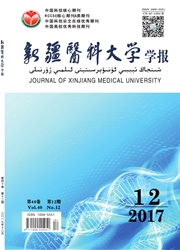

 中文摘要:
中文摘要:
目的比较体外授精(IVF)和卵泡浆内单精子显微注射术(ICSI)两种不同受精方式在低获卵周期中应用效果及其卫生经济学状况,为低获卵周期不孕妇女选择合理的受精方式提供临床依据。方法选择2013年1—12月在新疆医科大学第一附属医院生殖中心因输卯管因素不孕初次行助孕治疗且获卵数≤5枚患者239例共计239个周期,按照授精方式不同分为两组:A组(IVF)114个周期,B组(ICSI)125个周期,比较两组患者一般资料、治疗后受精、胚胎发育情况、临床结局及治疗费用和耗费卫生、人力资源情况。结果两组患者一般资料无明显统计学差异,但A组在正常受精率、平均每卵可移植胚胎率均低于B组,组间有统计学差异,A组完全受精失败率高于B组,有统计学差异,B组因无可移植胚胎取消周期率略高于A组,而B组临床妊娠率及胚胎种植率略低于A组,组间均无明显统计学差异。B组治疗费用及人均耗费卫生、人力资源均明显高于A组。结论在低获卵治疗周期中,排除男方因素及既往受精失败史患者采用IVF受精是一种既安全、有效又符合卫生经济学要求的治疗方式,值得推广应用。
 英文摘要:
英文摘要:
Objective To compare the application effect and health economics of two different insemination methods, and to provide clinical evidence for choosing a reasonable insemination method in low retrieved eggs cycles. Methods The records of 239 patients who received treatment for infertility caused by oviduct defects and low retrieved eggs from January 2012 to December 2013 were collected. The patients were di- vided into group A (IVF group, 114 cycles) and group B (ICSI group, 125 cycles) according to different insemination method. We compared two groups in terms of their general information, fertilization, embryo development, clinical outcomes and the cost of treatment and cost of health and human resources. Results There is no statistic difference in general information. But the rate of normal fertilization and the rate of available embryo per egg in group A is lower than that of group B, and the rate of complete fertilization failure in group A is higher than that of group B. The differences were statistically significant. However, there is no statistically significant difference in the rate of cancellation cycle due to no available embryo and clinical pregnancy and implantation. Moreover, the cost of treatment and cost of health and human resources in group B is higher than group A. Conclusion In lower retrieved eggs cycles, IVF is a safe, effective treatment and it is consistent with the requirements of health economics of treatment, and thus can be widely applied in clinic practice if we don't consider male factors and history of failed fertilization.
 同期刊论文项目
同期刊论文项目
 同项目期刊论文
同项目期刊论文
 期刊信息
期刊信息
